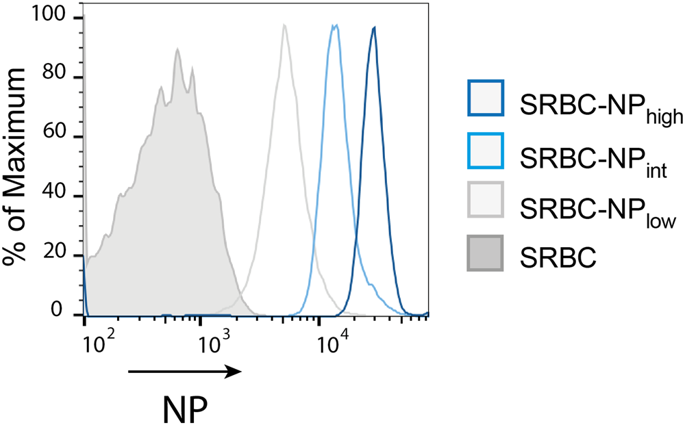Our official English website, www.x-mol.net, welcomes your feedback! (Note: you will need to create a separate account there.)
IgG-mediated immune suppression in mice is epitope specific except during high epitope density conditions.
Scientific Reports ( IF 4.6 ) Pub Date : 2018-Oct-16 , DOI: 10.1038/s41598-018-33087-6 Hui Xu , Lu Zhang , Birgitta Heyman
Scientific Reports ( IF 4.6 ) Pub Date : 2018-Oct-16 , DOI: 10.1038/s41598-018-33087-6 Hui Xu , Lu Zhang , Birgitta Heyman

|
Specific IgG antibodies, passively administered together with erythrocytes, suppress antibody responses against the erythrocytes. Although used to prevent alloimmunization in Rhesus (Rh)D-negative women carrying RhD-positive fetuses, the mechanism behind is not understood. In mice, IgG suppresses efficiently in the absence of Fcγ-receptors and complement, suggesting an Fc-independent mechanism. In line with this, suppression is frequently restricted to the epitopes to which IgG binds. However, suppression of responses against epitopes not recognized by IgG has also been observed thus arguing against Fc-independence. Here, we explored the possibility that non-epitope specific suppression can be explained by steric hindrance when the suppressive IgG binds to an epitope present at high density. Mice were transfused with IgG anti-4-hydroxy-3-nitrophenylacetyl (NP) together with NP-conjugated sheep red blood cells (SRBC) with high, intermediate, or low NP-density. Antibody titers and the number of single antibody-forming cells were determined. As a rule, IgG suppressed NP- but not SRBC-specific responses (epitope specific suppression). However, there was one exception: suppression of both IgM anti-SRBC and IgM anti-NP responses occurred when high density SRBC-NP was administered (non-epitope specific suppression). These findings answer a longstanding question in antibody feedback regulation and are compatible with the hypothesis that epitope masking explains IgG-mediated immune suppression.
中文翻译:

除了在高表位密度条件下,小鼠中IgG介导的免疫抑制是表位特异性的。
与红细胞一起被动给药的特异性IgG抗体可抑制针对红细胞的抗体应答。尽管用于预防携带RhD阳性胎儿的恒河猴(Rh)D阴性妇女的同种免疫,但尚不清楚其背后的机制。在小鼠中,在不存在Fcγ受体和补体的情况下,IgG可以有效抑制,提示Fc依赖性机制。与此相一致,抑制通常限于IgG结合的表位。但是,也观察到了针对未被IgG识别的表位的应答的抑制,因此认为与Fc无关。在这里,我们探索了当抑制性IgG与高密度存在的表位结合时,非表位特异性抑制可以通过位阻来解释的可能性。向小鼠输注具有高,中或低NP密度的IgG抗-4-羟基-3-硝基苯基乙酰(NP)以及与NP偶联的绵羊红细胞(SRBC)。确定抗体滴度和单个抗体形成细胞的数量。通常,IgG抑制NP特异性反应,而不抑制SRBC特异性反应(表位特异性抑制)。但是,有一个例外:当给予高密度SRBC-NP时,会同时抑制IgM抗SRBC和IgM抗NP反应(非表位特异性抑制)。这些发现回答了抗体反馈调节中一个长期存在的问题,并且与表位掩盖解释了IgG介导的免疫抑制的假说相符。确定抗体滴度和单个抗体形成细胞的数量。通常,IgG抑制NP特异性反应,而不抑制SRBC特异性反应(表位特异性抑制)。但是,有一个例外:当给予高密度SRBC-NP时,会同时抑制IgM抗SRBC和IgM抗NP反应(非表位特异性抑制)。这些发现回答了抗体反馈调节中一个长期存在的问题,并且与表位掩盖解释了IgG介导的免疫抑制的假说相符。确定抗体滴度和单个抗体形成细胞的数量。通常,IgG抑制NP特异性反应,而不抑制SRBC特异性反应(表位特异性抑制)。但是,有一个例外:当给予高密度SRBC-NP时,会同时抑制IgM抗SRBC和IgM抗NP反应(非表位特异性抑制)。这些发现回答了抗体反馈调节中一个长期存在的问题,并且与表位掩盖解释了IgG介导的免疫抑制的假说相符。
更新日期:2018-10-16
中文翻译:

除了在高表位密度条件下,小鼠中IgG介导的免疫抑制是表位特异性的。
与红细胞一起被动给药的特异性IgG抗体可抑制针对红细胞的抗体应答。尽管用于预防携带RhD阳性胎儿的恒河猴(Rh)D阴性妇女的同种免疫,但尚不清楚其背后的机制。在小鼠中,在不存在Fcγ受体和补体的情况下,IgG可以有效抑制,提示Fc依赖性机制。与此相一致,抑制通常限于IgG结合的表位。但是,也观察到了针对未被IgG识别的表位的应答的抑制,因此认为与Fc无关。在这里,我们探索了当抑制性IgG与高密度存在的表位结合时,非表位特异性抑制可以通过位阻来解释的可能性。向小鼠输注具有高,中或低NP密度的IgG抗-4-羟基-3-硝基苯基乙酰(NP)以及与NP偶联的绵羊红细胞(SRBC)。确定抗体滴度和单个抗体形成细胞的数量。通常,IgG抑制NP特异性反应,而不抑制SRBC特异性反应(表位特异性抑制)。但是,有一个例外:当给予高密度SRBC-NP时,会同时抑制IgM抗SRBC和IgM抗NP反应(非表位特异性抑制)。这些发现回答了抗体反馈调节中一个长期存在的问题,并且与表位掩盖解释了IgG介导的免疫抑制的假说相符。确定抗体滴度和单个抗体形成细胞的数量。通常,IgG抑制NP特异性反应,而不抑制SRBC特异性反应(表位特异性抑制)。但是,有一个例外:当给予高密度SRBC-NP时,会同时抑制IgM抗SRBC和IgM抗NP反应(非表位特异性抑制)。这些发现回答了抗体反馈调节中一个长期存在的问题,并且与表位掩盖解释了IgG介导的免疫抑制的假说相符。确定抗体滴度和单个抗体形成细胞的数量。通常,IgG抑制NP特异性反应,而不抑制SRBC特异性反应(表位特异性抑制)。但是,有一个例外:当给予高密度SRBC-NP时,会同时抑制IgM抗SRBC和IgM抗NP反应(非表位特异性抑制)。这些发现回答了抗体反馈调节中一个长期存在的问题,并且与表位掩盖解释了IgG介导的免疫抑制的假说相符。


























 京公网安备 11010802027423号
京公网安备 11010802027423号